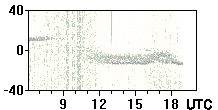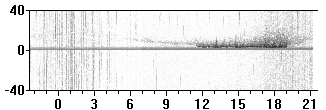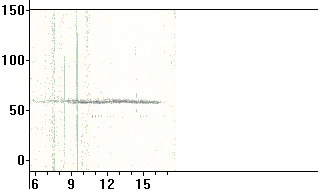http://www.iw5edi.com/technical-articles/microphone-connections
Welcome, this page describes microphone wiring connections for most UK and foreign radios. Most U.S. radios are “Code Type 2″, so if the radio you want to wire a mic up for is not mentioned here, be sure to try out “Code Type 2″.
To Use this Chart: Look up your radio. To the left is a “Type” number. Look further down the Chart to CODE section. Find your number. This is your radio’s mic wiring. Further down the Chart are a few microphone’s and their wiring pinouts. Remember that the Shield wire is most alway’s wrapped around the Audio wire.
--------------------------------------------------------------------------------
Radio TYPE
-------------------------------
Academy CB501 4
Academy CB502 4
Alan (Midland) 555 2
Alan {Midland) 560 15
Alba CBM1 1
Alpha 4000 1
Amstrad CB900 4
Amstrad CB901 1
Antron CB5097 9
Atron 507 2
Audioline 340 2
Audioline 341 2
Audioline 345 2
--------------------------------------------------------------------------------
Barracuda GT868 4
Barracuda HB940 1
Beta 1100 (Kernow) 1
Beta 2100 (Kernow) 12
Beta 3100 (Kernow) 12
Binatone 5 Star 1
Binatone Route 66 1
Binatone Speedway 1
Boman CB 515 - 525
535 - 710 - 910 - 920
930 - 950 - 970 - 990 1
Braemar PT40 1
--------------------------------------------------------------------------------
CB master 2040 17
Cheiza CB702 4
Cobra 18LTD 2
Cobra 18 PLUS 3
Cobra 18RV 3
Cobra 18ULTRA 2
Cobra 19 2
Cobra 19DX-LTD 2
Cobra 19GTL 2
Cobra 19LTD 2
Cobra 19Plus 3
Cobra 19ULTRA 2
Cobra 19X 3
Cobra 20 LTD 3
Cobra 20PLUS 3
Cobra 21 2
Cobra 21GTL 2
Cobra 21LTD 2
Cobra 21LTD-CLASSIC 2
Cobra 21XFM 3
Cobra 21XLR 2
Cobra 23 PLUS 3
Cobra 25 2
Cobra 25GTL 2
Cobra 25LTD 2
Cobra 25LTD-CLASSIC GOLD 2
Cobra 25LTD-WX CLASSIC 2
Cobra 25PLUS 2
Cobra 26 2
Cobra 29 2
Cobra 29LTD 2
Cobra 29LTD-CLASSIC 2
Cobra 29LTD-CLASSIC-GOLD 2
Cobra 29LTDWX CLASSIC 2
Cobra 29PLUS 2
Cobra 29XLR 2
Cobra 31PLUS 2
Cobra 33PLUS 2
Cobra 40X 2
Cobra 41 PLUS 3
Cobra 77X 2
Cobra 78X 2
Cobra 86XLR 2
Cobra 87GTL 2
Cobra CAM-89 2
Cobra 89GTL 2
Cobra 89XLR 2
Cobra 90 14
Cobra 90 LTD 14
Cobra 93LTD-WX 2
Cobra 135 2
Cobra 135XLR 2
Cobra 138XLR 2
Cobra 139XLR 2
Cobra 140GTL 14
Cobra 142GTL 14
Cobra 148GTL 14
Cobra 146GTL 2
Cobra 148-F-GTL 14
Cobra 148GTL-B 2
Cobra 148GTL-DX 2
Cobra 1000GTL 2
Cobra 2000GTL 14
Cobra 2010 14
Colt 210 17
Colt 220 17
Colt 222 17
Colt 290 1
Colt 295 3
Colt 390 - 480 - 485 1
Colt 510 17
Colt 800 - 870
1000 - 1200 - 2400 1
Commtel GT858 4
Commtel GT868 4
Commtron CB40F 3
Commtron CXX 17
Commtron X11 17
Communicator NI440DX 1
Compact 40 1
Connex 3300 2
Consam 1320 1
Courier Galaxy 14
Craig L193 2
Craig L101 - L102 19
Craig L104 2
Craig L131 18
Craig L232 14
Craig L231 - L331 14
Craig 4101 - 4102
4103 - 4104 - 4201 19
Cybernet Beta 1000 1
Cybernet Beta 2000 1
Cybernet Beta 3000 1
Cybernet Delta 1 1
--------------------------------------------------------------------------------
Danita 440 7
Danita 640 2
Dirland 77-099 2
Dirland SuperStar 3900 2
Dirland SuperStar 3900B 2
DNT M40 5
DNT B40FM 5
Domico Convoy 1 1
--------------------------------------------------------------------------------
Eagle 2000 2
Eagle 5000 15
Elftone 4
Emperor TS-5010 16
Eurosonic ES404 1
Eurosonic Euro II 1
Eurosonic GT868 1
--------------------------------------------------------------------------------
Falcon FCB1281 1
Fidelity CB1000FM 4
Fidelity CB2000FM 1
Fidelity CB2001FM 1
Fidelity 3000FM 4
Ford Roadmaster 505 1
Formac 88-120 1
Formac 88 (5 pin) 17
--------------------------------------------------------------------------------
Galaxy DX33HML 2
Galaxy 33Plus 2
Galaxy DX44V 2
Galaxy DX55 2
Galaxy DX66V 2
Galaxy DX77HML 2
Galaxy DX77V 2
Galaxy DX88HML 2
Galaxy 2100 2
Galaxy Jupitor 2
Galaxy Mars 2
Galaxy Mirage 2
Galaxy Mirage 44 2
Galaxy Pluto 2
Galaxy Saturn 2
Galaxy Saturn 2 2
Galaxy Sirius 2
Galaxy Super Galaxy 2
Gecol 4
Grandstand Base 9
Grandstand Bluebird 7
Grandstand Gemini 7
Grandstand Hawk 1
--------------------------------------------------------------------------------
Ham International (all) 1
Harrier CB 1
Harier CBX 1
Harier HQ 1
Harry Moss 325 2
Havard 402 (H160) 1
Havard H403 G/Buddy 11
Havard H404 1
Havard H407 1
Havard 420M (H405) 1
Havard H646 1
--------------------------------------------------------------------------------
Icom ICB1050 1
Interceptor TC300 1
--------------------------------------------------------------------------------
Jesan KT200 1
Jesan KT4004 1
Jesan KT 7007 1
Jesan Pro 8000 1
Johnstone 4
JWR M2 1
--------------------------------------------------------------------------------
Kestral 1
Kraco 4004 2
Kraco 4030 1
--------------------------------------------------------------------------------
Lake Manxman 850 4
Lake Manxman 950 4
Lancaster 1
LCL 2740 5
LCL Economy 5
LCL Enterprise 5
Legionairre 11
Lowe TX40 3
--------------------------------------------------------------------------------
Manor Kestrel 1
Maxcom 6E 3
Maxcom Appolo 16E 3
Maxcom 20E 3
Maxcom 21E 3
Maxcom 30E 1
Maxon MX1000 12
Maxon MX2000 12
Maycom EM27 12
Midland 2001 1
Midland 3001 1
Midland 4001 1
Midland 77-095 1
Midland 77-099 3
Midland 77-104 3
Midland 77-805 13
Midland Power Max 1
Moonraker Major 1
Moonraker Minor 1
Murphy CBH1500 20
Murphy CBH1500 10
Murphy DS602 1
Mustang CB1000 1
Mustang CB2000 1
Mustang CB3000 1
--------------------------------------------------------------------------------
Nato 2000 1
Nentone 3
--------------------------------------------------------------------------------
Pama GX19 1
Pama GX25 1
Pama GX1000 1
Pama GX2000 1
Planet 2000 1
Pyramid 1300 2
Pyramid CB-22 1
Pyramid CB-24 1
Pyramid CB-25 1
Pyramid CB-26 1
Pyramid CB-28 1
--------------------------------------------------------------------------------
Radiomobile CB201 1
Radiotechnic RT852 5
Ranger 2950 15
Ranger 2970 15
Ranger 2900 15
Ranger 2990 15
Realistic TRC2000 6
Realistic TRC2001 6
Realistic TRC2002 6
Realistic TRC3000 6
Reftec 934 1
Rotel RVC220 1
Rotel RVC230 1
Rotel RVC240 1
--------------------------------------------------------------------------------
Sapphire X2000 4
Sapphire X4000 1
Satcom Scan 40F 1
Satcom Scan 4000 1
Shogun 8
Sirtel Searcher 3
SMC Oscar 1 1
SMC Oscar 2 1
Spinneytronic CB199 1
Sun 401 1
Superstar 2000 1
--------------------------------------------------------------------------------
Team Eurocontrol 12
Team Euro 3004 12
Team Euro 3100UK 1
Team TRX404 1
Team TRX404UK 1
Team TS290 12
Team TS1000 3
Team TSM404 1
Telecom TC900 21
Transcom GBX4000 1
Transcom 1000,2000,3000 1
--------------------------------------------------------------------------------
Uniden 100 2
Uniden 200 2
Uniden 300 2
Uniace 400 (934) 1
Uniden 400 (cept) 2
Uniden PC404 2
Uniden PRO 420E 2
Uniden PRO 450E 2
Uniden PRO 620E 2
Uniden HR-2510 16
Uniden HR-2600 16
Uniden Grant XL 14
Uniden Lincoln 16
Uniden Washington 14
--------------------------------------------------------------------------------
Viper 88 1
--------------------------------------------------------------------------------
Wagner 506 9
--------------------------------------------------------------------------------
York JCB861 1
York JCB863 1
York JCB867 1
--------------------------------------------------------------------------------
Zodiac M144 7
Zodiac M244 7
--------------------------------------------------------------------------------
Wiring Codes Explained:
Type 1
1 = Audio
2 = Ground / Common
3 = Receive
4 = Transmit
Type 2
1 = Ground / Common
2 = Audio
3 = Transmit
4 = Receive
Type 3
1 = Audio
2 = Transmit
3 = N/C
4 = Ground / common
5 = Receive
Type 4
1 = Receive
2 = Transmit
3 = Audio
4 = Ground / Common
Type 5
1 = Audio
2 = N/C
3 = Transmit
4 = Ground / Common
5 = N/C
Type 6
1 = Ground / common
2 = N/C
3 = Transmit
4 = Audio
5 = Receive
Type 7
1 = Audio
2 = Ground / Common
3 = Transmit
4 = N/C
5 = Receive
Type 8
1 = Audio
2 = Ground / Common
3 = Transmit
4 = Receive
5 = 12 Volt Feed
Type 9
1 = Ground / Common
2 = Audio
3 = Transmit
4 = N/C
Type 10
1 = Recieve
2 = Ground / Common (Linked)
3 = Transmit
4 = Audio
Type 11
1 = Audio
2 = Ground / Common
3 = Transmit
4 = Receive
Type 12
1 = Audio
2 = Receive
3 = Transmit
4 = Down/Up
5 = Ground / Common
6 = N/C or volts
Type 13
1 = Transmit
2 = Receive
3 = N/C
4 = Ground / Common
5 = Audio
Type 14
1 = Audio
2 = Ground / Common
3 = Receive
4 = Switching Wire
5 = Transmit
Type 15
1 = Ground / Common
2 = Audio
3 = Transmit
4 = Receive
5 = Channel Up
6 = Channel Down
Type 16
1 = Audio
2 = Ground / Common
3 = Transmit
4 = Channel Up
5 = Channel Down
Type 17
1 = Audio
2 = Transmit
3 = Shield
4 = N/C
5 = Receive
Type 18
1 = N/C
2 = Audio
3 = Receive
4 = Shield
5 = Transmit
Type 19
1 = N/C
2 = Audio
3 = Shield
4 = Receive
5 = Transmit
Type 20
1,2 = Screen
3 = Transmit
4 = Audio
Type 21
1 = Audio
2 = Screen
3 = Transmit
4 = Receive
5 = n/c
Microphone Colour Codes
Altai(All)
Shield = Ground
Black = Common
Red = Mic or Audio
White = TX
Blue = RX
Astatic 4 Wire
575M, D104M, TUG-8,
Shield= Common
White= Mic or Audio
Red= Tx
Black= Rx
Astatic 6 Wire
575M-6, 636L,D104M-6, M6B,1104C/CM,
T-UG9, T-UP9, Diamond/Golden Eagle,
Night K/Silver K Eagle, Road Devil
Shield = Ground
Blue = Common
White = Mic or Audio
Red = TX
Black = RX
Yellow = Audio Switch
Cobra
CA- 70 /71 / 72 / 79 / 80
Shield = Ground
Black = Common
Red = Mic or Audio
White = Tx.
Blue = Rx.
CTE F10 & F16
Shield = Common
Blue = Mic or Audio
White = TX
Red = RX
Daiwa
EM-500
Shield = Ground
Black = Common
Red = Mic or Audio
White = Tx.
Blue = Rx.
Galaxy
DC-521S (4 Wire)
Shield = Common
Yellow = Mic or Audio
Red = Tx.
Black = Rx.
Galaxy
CB-660EI / EIR
Shield = Ground
Black = Common
White = Mic or Audio
Red = Tx.
Blue = Rx
Heatherlite
Shield = Common
White = Mic or Audio
Red = TX
Black = RX
K40
Shield = Ground
Black = Common
White = Mic or Audio
Red = TX
Blue = RX
Yellow = Audio Switch
Realistic 5 wire
Shield = Common
White = Mic or Audio
Red = TX
Black = RX
Blue = Audio Switch
Sadelta (All)
Bravo Plus, EchoMaster +/ Pro,
ME-3, MB-4, MB-4 W/R.B.
Shield = Common
White = Mic or Audio
Brown = TX
Green = RX
Turner 3 Wire
Shield = Common
White = Mic or Audio
Black = TX
Red = RX
Turner 6 Wire
Expander 500, Road Kink 56 / 76
Shield = Shield
Red = Common
White = Mic Or Audio
Blue = TX
Black = RX
Yellow = Audio Switch
Valor
PDC-66/67
Shield= Common
White= Mic or Audio
Red= Tx
Black= Rx
Zetagi
Shield = Common
Yellow = Audio
Black = TX
Red = RX

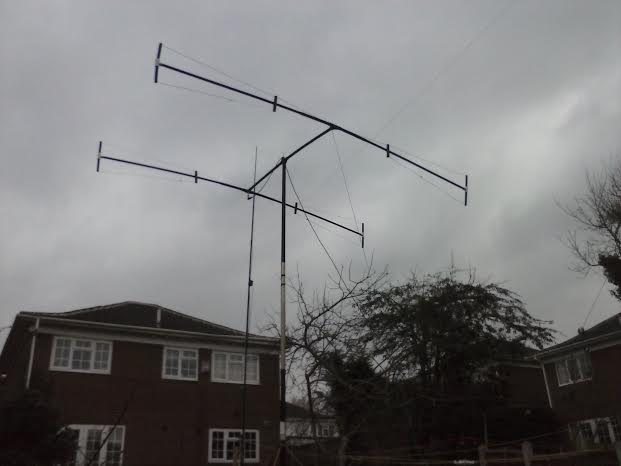




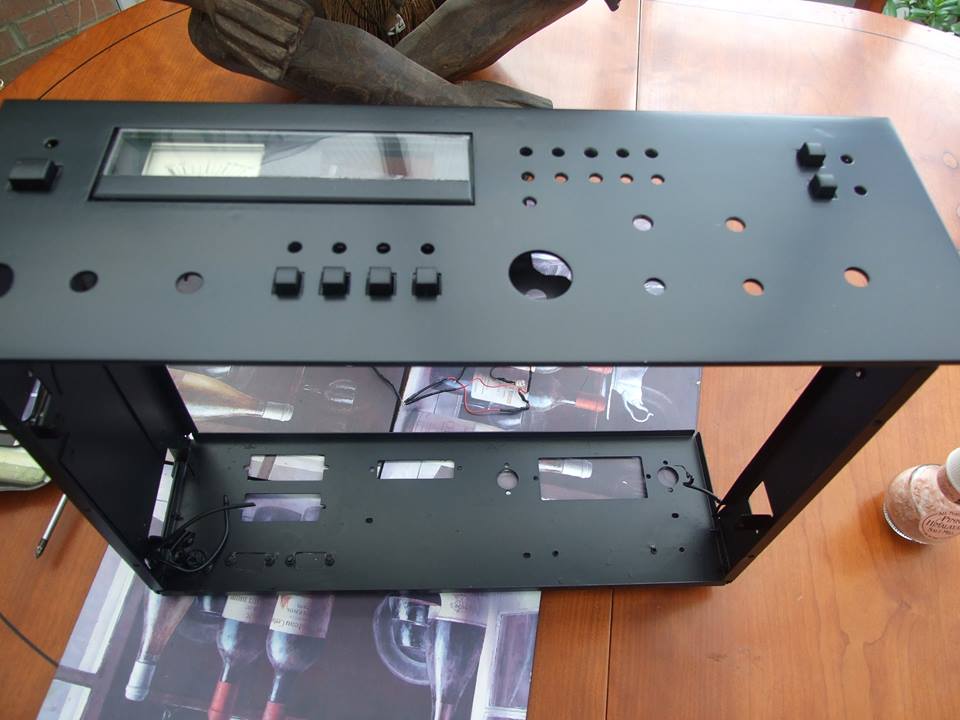

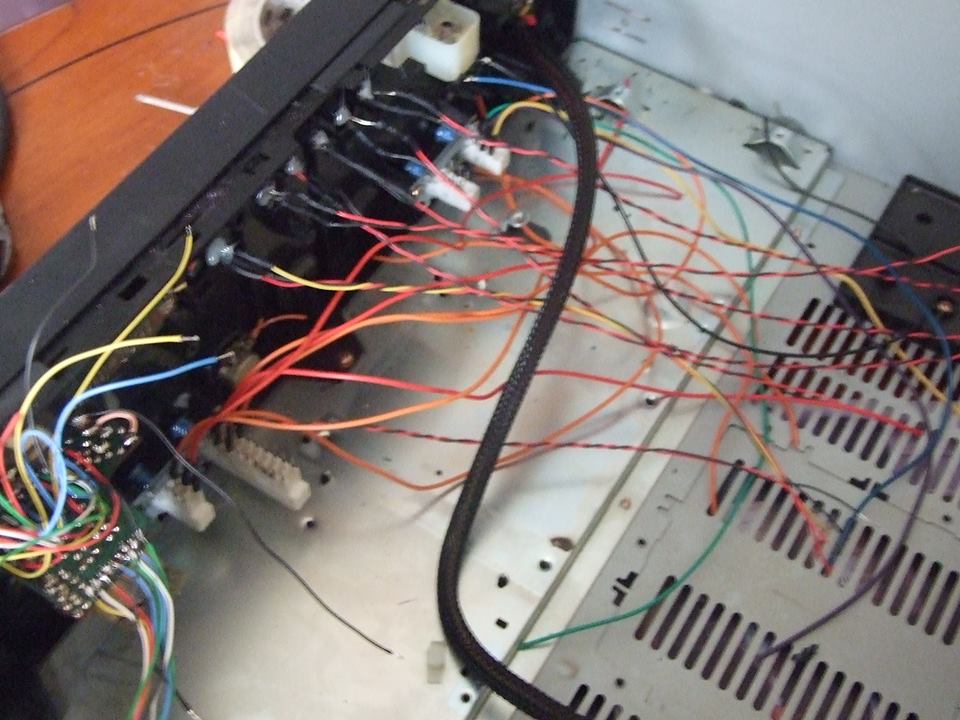



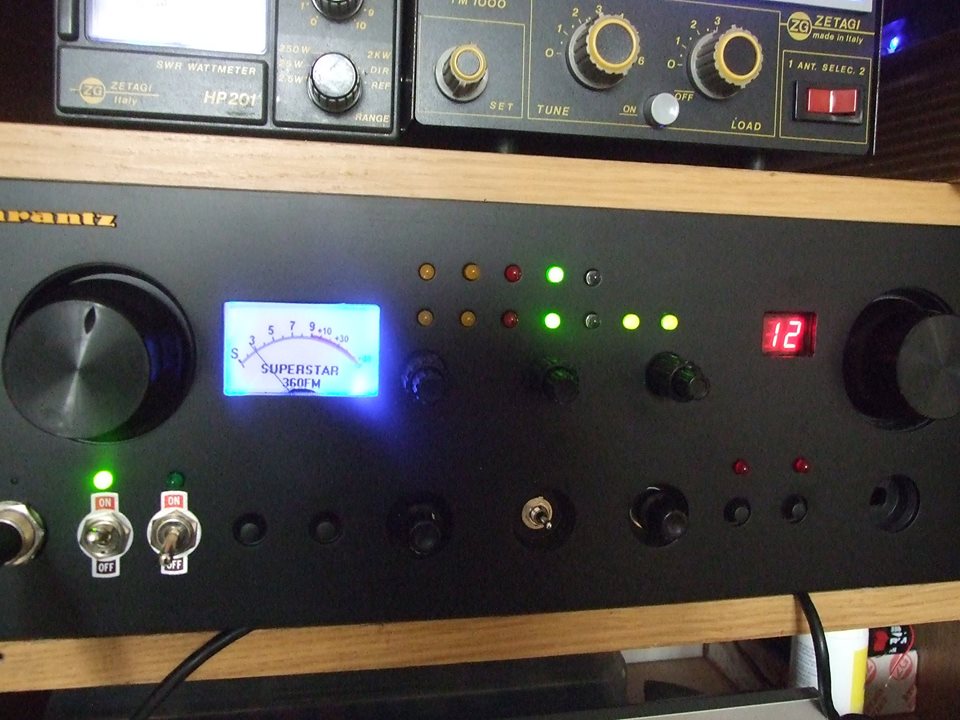


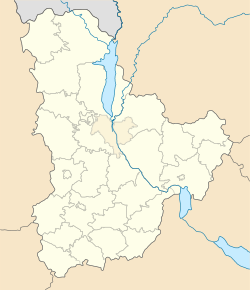
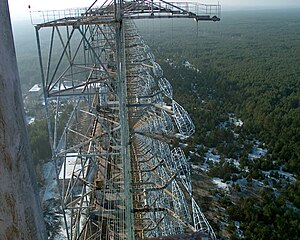
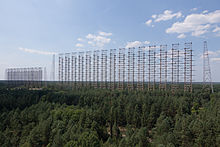

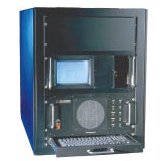 In searching for suitable pulse transmissions to use, preferably transmissions
available from all over the world on a 24 hour basis, Peter stumbled across a family
of transmitters that are used as swept frequency ionospheric sounders. In their
normal application, research, professional and military groups use these low power
devices to probe the ionosphere to measure propagation. The signal consists of a
single long 'chirp', sweeping up in frequency at a constant rate, and repeated periodically. These transmissions
are tracked by a companion receiver which is zero beat with the transmitter, and
so ionospheric reflections that are returned with short delays are heard as lower sideband audio
beats of a few hundred Hz. The equipment then builds an 'ionogram' or two dimensional
graphical representation of the ionosphere's reflection height or delay against
frequency. The adjacent picture illustrates a typical commercial 50W FM/CW (chirped) ionospheric
sounding transmitter.
In searching for suitable pulse transmissions to use, preferably transmissions
available from all over the world on a 24 hour basis, Peter stumbled across a family
of transmitters that are used as swept frequency ionospheric sounders. In their
normal application, research, professional and military groups use these low power
devices to probe the ionosphere to measure propagation. The signal consists of a
single long 'chirp', sweeping up in frequency at a constant rate, and repeated periodically. These transmissions
are tracked by a companion receiver which is zero beat with the transmitter, and
so ionospheric reflections that are returned with short delays are heard as lower sideband audio
beats of a few hundred Hz. The equipment then builds an 'ionogram' or two dimensional
graphical representation of the ionosphere's reflection height or delay against
frequency. The adjacent picture illustrates a typical commercial 50W FM/CW (chirped) ionospheric
sounding transmitter.
